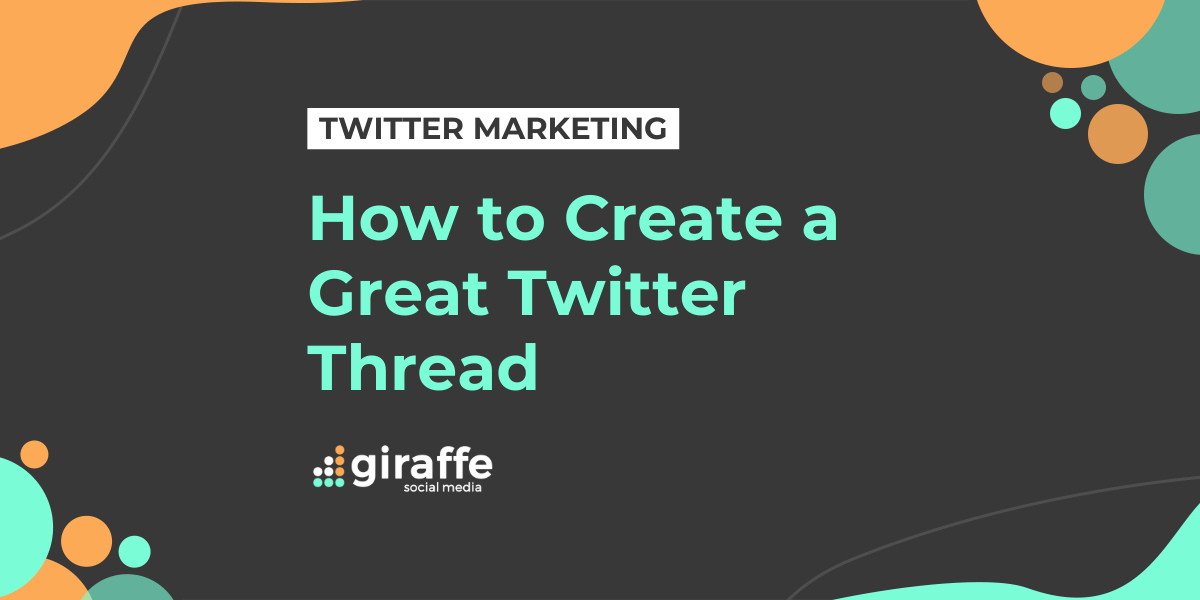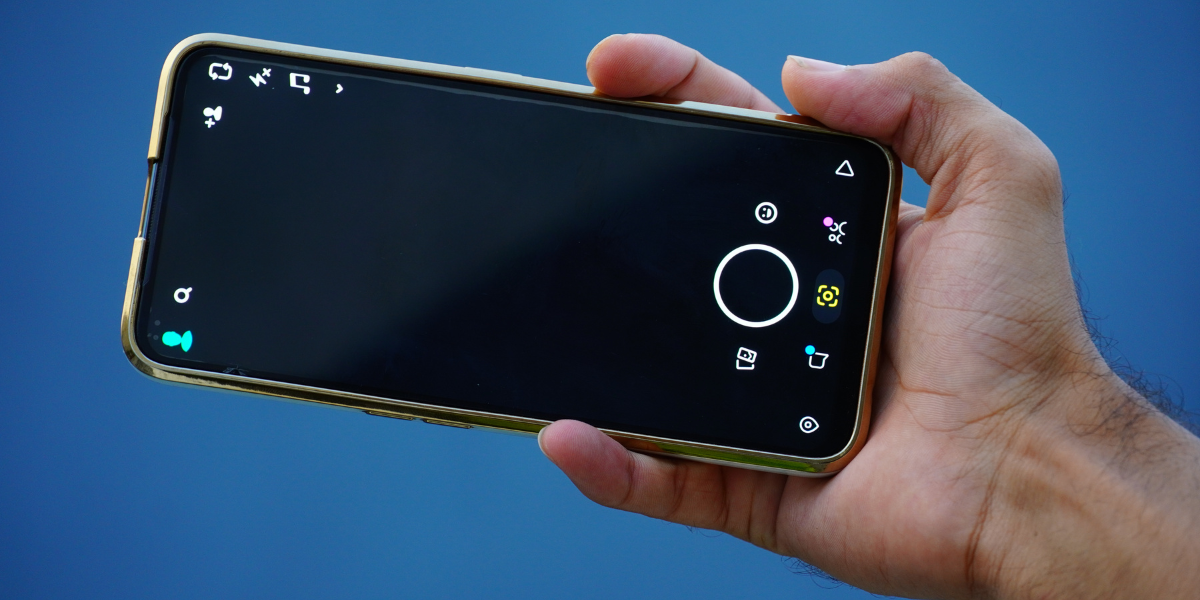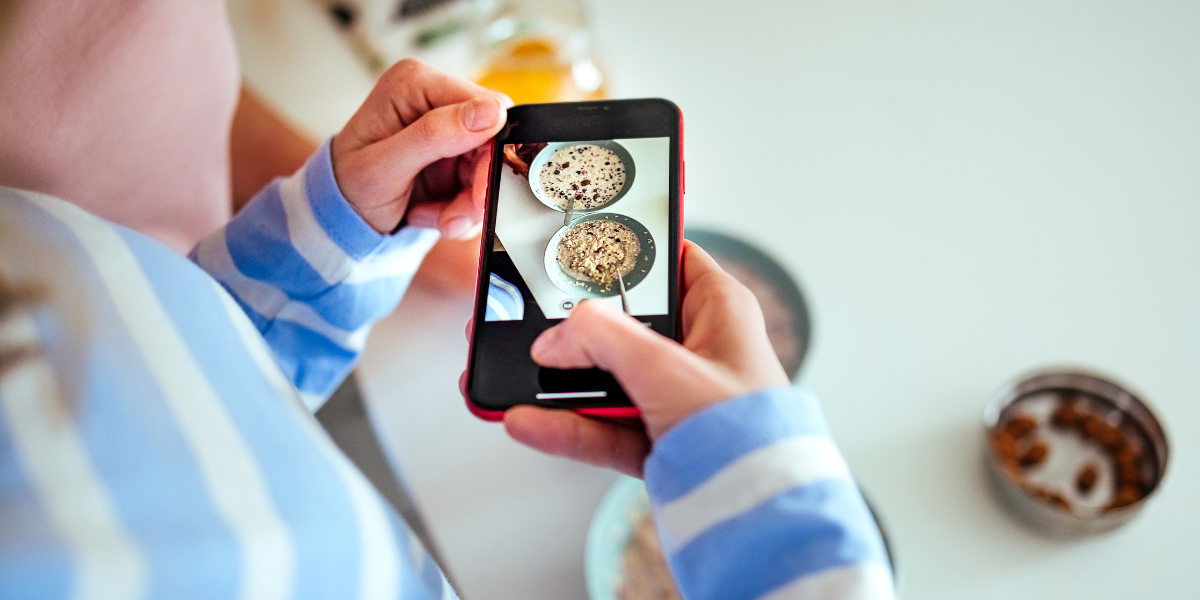In the past, Twitter had built up an image of being the fast-paced social media platform, filled with short and snappy Tweets. The move from the 140-character limit up to 280 characters back in 2017 was met with caution from many creators, and glee from others. For social media marketers, it meant more freedom to use proper formatting and grammar, and more characters with which to sell/promote/intrigue/educate.
Still, 280 characters is a challenge for businesses that want to share longer content, especially content to educate and inform their audience. Introducing: Twitter threads.
What is a Twitter Thread?
For those with a lot to say, Twitter allows you to create a series of connected Tweets, known as a thread. If you see a single Tweet that is part of a thread, you will see a prompt to Show this thread so you can see the whole thread in context. This also applies if you Retweet or Quote Tweet a Tweet in a thread.
[Giraffe Social Media show this thread example – NehaKPuri on Twitter] https://twitter.com/NehaKPuri_/status/1411222458049253377
Different Types of Twitter Threads
Twitter threads are quite versatile, your only limit is your creativity. Here are some examples of Twitter threads you could create for your business’ Twitter:
- List threads, informing your audience on a topic,
- Checklists and how-to guides,
- Storytelling threads,
- Compilation/collection threads, anything from memes to your products,
- Behind-the-scenes or background information threads,
- Follow-ups/updates on campaigns, events, or giveaways,
- User engagement threads, asking your followers to respond to your questions/send in user-generated content (UGC).
Planning Your Thread
All the best, most engaging Twitter threads are planned out, not spontaneous. As you would with your other written content, plan your thread from beginning to end before you start writing, and note down your key points. Make sure to keep in mind the purpose/goal of your thread throughout the writing process.
For example, if your goal is to boost engagement and receive replies from your followers, come up with a compelling topic for users to engage with. You can also give users an incentive to reply, such as a branded hashtag they can use in their reply that will also enter them into a prize draw.
How to Create a Thread
It all starts with that first Tweet! To get started, click the Tweet button. Write your first Tweet; now, instead of pressing Tweet straight away, click the + button to the left of the Tweet button. This will let you add another Tweet in the thread before publishing any of them, allowing you to carefully craft your thread before the world sees it.
You can also retroactively create threads by adding more Tweets in reply to a previously posted Tweet. This is great for continuing a conversation that happened a little while ago, following up on a campaign or competition, and revitalising older Tweets. Perhaps you posted a Tweet 5 weeks ago that performed well and realised you had much more to say on the topic – with threads, you can build on the success of previous Tweets to continue a discussion.
However, ensure that any retroactive threads are relevant and valuable to the original Tweet. You don’t want to spam your followers by constantly replying to your own Tweets with unrelated comments. The key here is to always make sure that your threads will add value.
The Best Ways to Begin Your Thread
Now you know how to create a thread, you need to know the best ways to write your thread. There aren’t necessarily ‘correct’ and ‘incorrect’ answers here, just best practices and ways to grab the reader’s attention, as with all content writing.
Whatever the purpose of your thread, your opening Tweet will need to catch the attention of the user and encourage further reading. We recommend treating this opening Tweet like a title and introductory line, you want to make clear the value of the thread in as few words as possible. You can also use emojis, if appropriate for your audience, to make the Tweet more visually interesting and draw the reader’s attention.
We don’t recommend using ‘clickbait’ first Tweets if you want users to read to the end of the thread. Readers will get frustrated if the thread is entirely different to what they expected. Storytelling threads may have a slight exception to this rule, as twists and turns are great to keep a reader hooked.
How to Keep Users Engaged and Reading
Even if you’re not writing a story thread, “use your storytelling skills to keep your readers engaged until the end of the thread,” just as you would in a blog post. For factual and list-type threads, keep the thread neat and organised; you can number the Tweets (e.g. “1/5”) for further clarity and structure, which may also help hold the reader’s attention span.
Also, try to make your thread shareable. When your Twitter thread resonates with someone, they’re more likely to share it with their followers by Retweeting. The majority of people (68%) “share content to give others a sense of who they are and what they care about.” Keep your thread’s value clear and consistent throughout, increasing its shareability factor.
Best Practices for Using Visuals in a Twitter Thread
One way to help get your points across is to use accompanying images/visuals. When they are used in a relevant, valuable context, visuals will help keep your users engaged. For example, in a thread discussing your latest research, you may have charts and graphs to share that visualise what you’re discussing. In a ‘collection’ thread, you may want to include visuals to represent the product you’re talking about, or a short video if relevant.
Try not to send users away from your thread too often or it could get confusing. Limit links and tagged accounts to where they are strictly necessary and/or to the last Tweet in the thread. Constantly linking off to other pages and accounts will distract users and decrease the thread’s overall engagement.
How to End Your Twitter Thread
The end of your thread should tie the whole thread together and, ideally, involve a call-to-action (CTA). Depending on your goals, your CTA will vary. For engagement threads, your CTA could be a final ask to your followers to reply to a question or send in photo replies. For informative/educational threads, you may link off to a related blog post or article to encourage further reading. With promotional threads, you may be aiming to see conversions, so your CTA may link off to a product area/page on your website, a newsletter sign-up list, or another campaign-focused landing page.
Need help with Twitter marketing? Request a proposal from us to find out how we can rejuvenate your Twitter feed.






